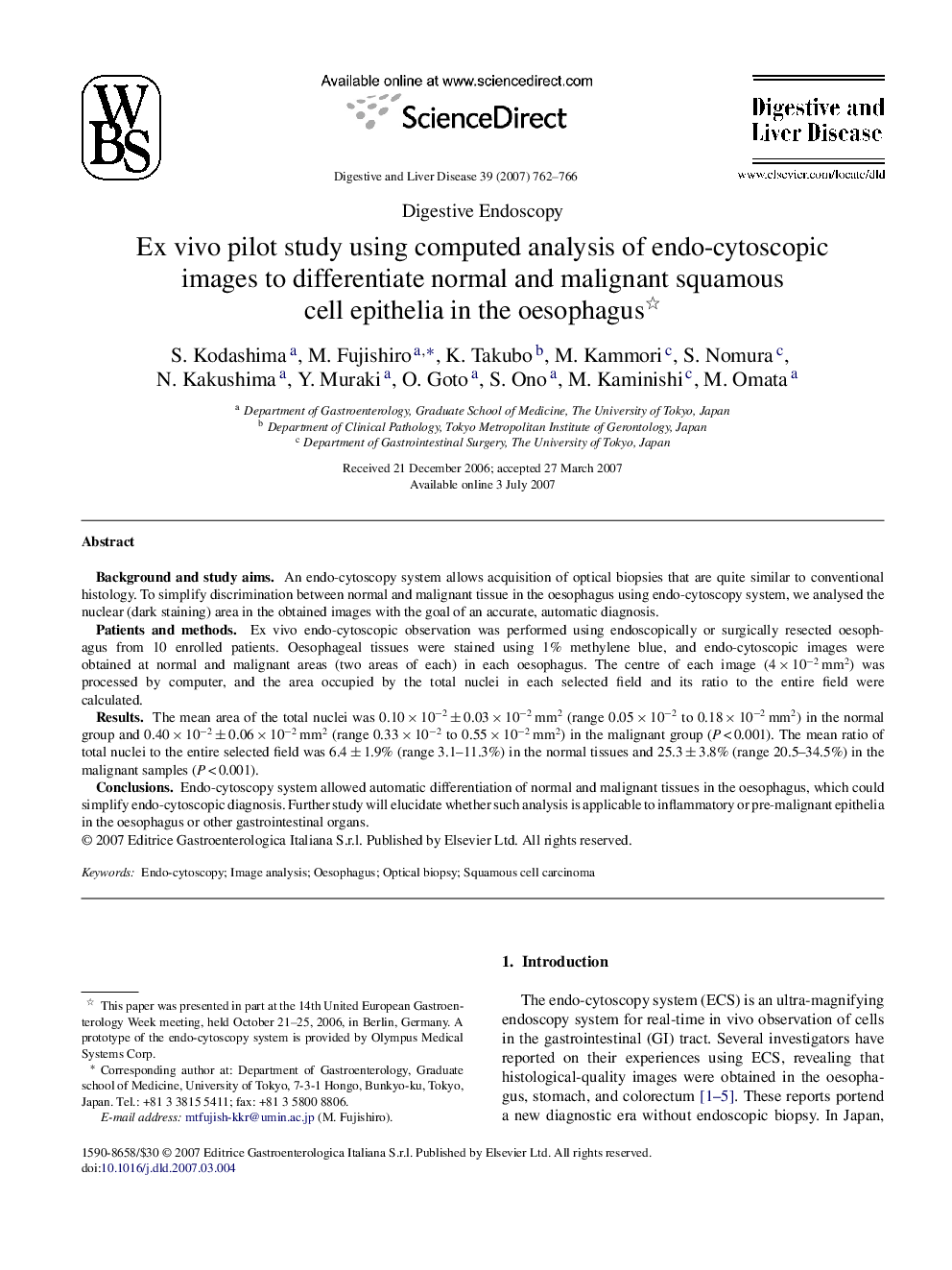| Article ID | Journal | Published Year | Pages | File Type |
|---|---|---|---|---|
| 3266208 | Digestive and Liver Disease | 2007 | 5 Pages |
Background and study aimsAn endo-cytoscopy system allows acquisition of optical biopsies that are quite similar to conventional histology. To simplify discrimination between normal and malignant tissue in the oesophagus using endo-cytoscopy system, we analysed the nuclear (dark staining) area in the obtained images with the goal of an accurate, automatic diagnosis.Patients and methodsEx vivo endo-cytoscopic observation was performed using endoscopically or surgically resected oesophagus from 10 enrolled patients. Oesophageal tissues were stained using 1% methylene blue, and endo-cytoscopic images were obtained at normal and malignant areas (two areas of each) in each oesophagus. The centre of each image (4 × 10−2 mm2) was processed by computer, and the area occupied by the total nuclei in each selected field and its ratio to the entire field were calculated.ResultsThe mean area of the total nuclei was 0.10 × 10−2 ± 0.03 × 10−2 mm2 (range 0.05 × 10−2 to 0.18 × 10−2 mm2) in the normal group and 0.40 × 10−2 ± 0.06 × 10−2 mm2 (range 0.33 × 10−2 to 0.55 × 10−2 mm2) in the malignant group (P < 0.001). The mean ratio of total nuclei to the entire selected field was 6.4 ± 1.9% (range 3.1–11.3%) in the normal tissues and 25.3 ± 3.8% (range 20.5–34.5%) in the malignant samples (P < 0.001).ConclusionsEndo-cytoscopy system allowed automatic differentiation of normal and malignant tissues in the oesophagus, which could simplify endo-cytoscopic diagnosis. Further study will elucidate whether such analysis is applicable to inflammatory or pre-malignant epithelia in the oesophagus or other gastrointestinal organs.
